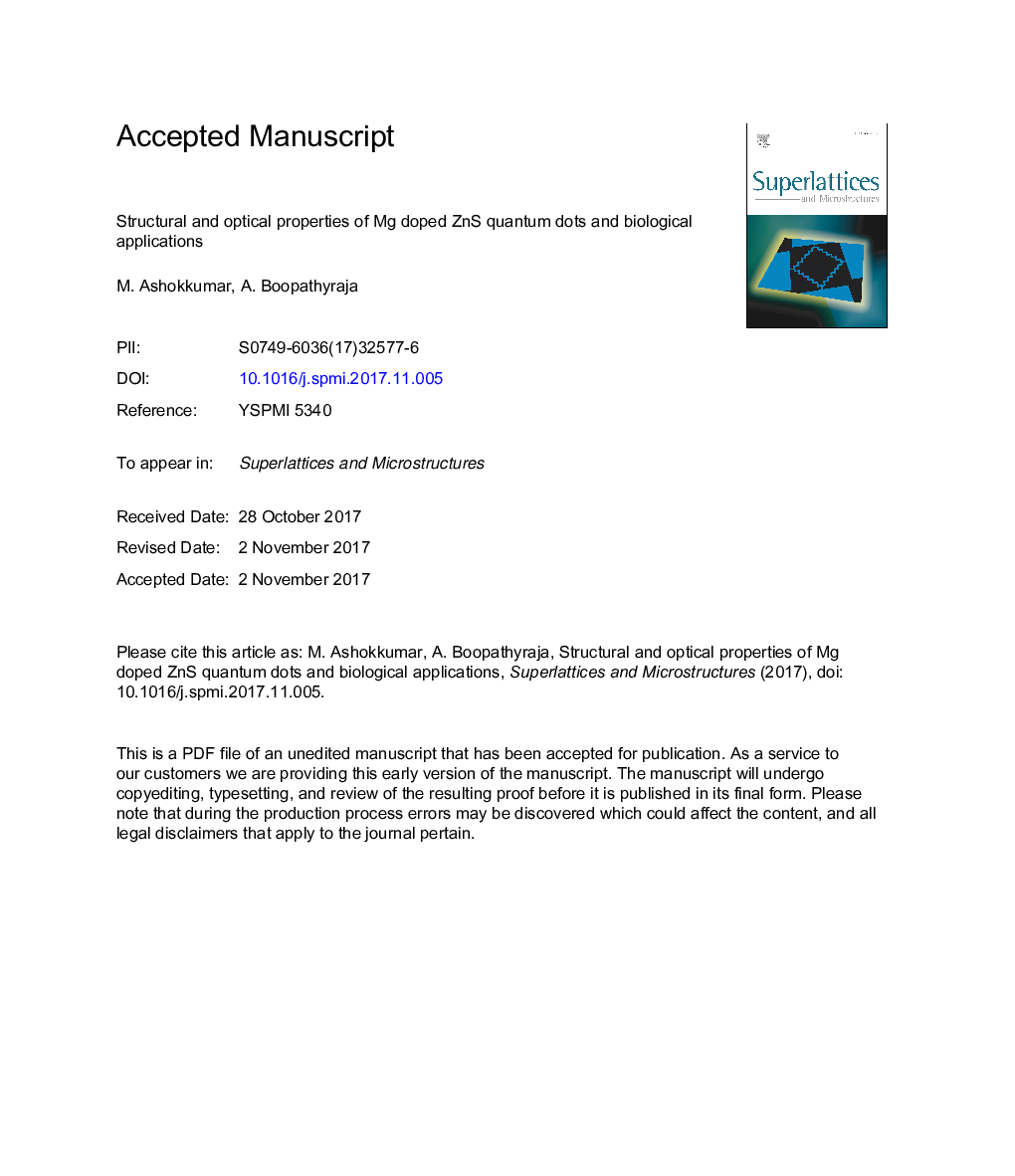| Article ID | Journal | Published Year | Pages | File Type |
|---|---|---|---|---|
| 7939260 | Superlattices and Microstructures | 2018 | 23 Pages |
Abstract
Zn1âxMgxS (x = 0, 0.2 and 0.4) quantum dots (QDs) were prepared by co-precipitation method. The Mg dopant did not modify the cubic blende structure of ZnS QDs. The Mg related secondary phase was not detected even for 40% of Mg doping. The size mismatch between host Zn ion and dopant Mg ion created distortion around the dopant. The creation of distortion centres produced small changes in the lattice parameters and diffraction peak position. All the QDs showed small sulfur deficiency and the deficiency level were increased by Mg doping. Band gap of the QD was decreased due to the dominated quantum confinement effect over compositional effect at initial doping of Mg. But at higher doping the band gap was increased due to compositional effect, since there was no change in average crystallite size. The prepared QDs had three emission bands in the UV and Visible regions corresponding to near band edge emission and defect related emissions. The electron transport reaction chain which forms free radicals was broken by sulfur vacancy trap sites. Therefore, the ZnS QDs had better antioxidant activity and the antioxidant behaviour was enhanced by Mg doping. The enhanced UV absorption and emission of 20% of Mg doped ZnS QDs let to maximize the zone of inhibition against E. Coli bacterial strain.
Related Topics
Physical Sciences and Engineering
Materials Science
Electronic, Optical and Magnetic Materials
Authors
M. Ashokkumar, A. Boopathyraja,
